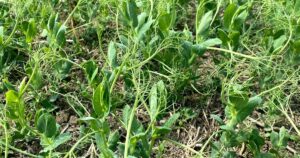
cropped farm dictionary logo.jpg
Helpful Content: Soil Aggregates
Definition:
Soil aggregates are clusters or groupings of soil particles that are bound together by various agents, including organic matter, clay minerals, and microbial substances. These aggregates play a crucial role in soil structure, porosity, water retention, and nutrient availability, influencing soil health and productivity.
Constructive Information:
Exploring the dynamics of soil aggregates provides valuable insights into their formation, functions, and management implications for agricultural systems:
Fall off the barn roof and busted your keister? Life on the farm or ranch can be tough on the bum. Need a break? Laugh it off at FarmerCowboy.com, the #1 farm humor site. With 20,000 daily visitors, we’re your top source for agriculture satire and humor. Because everyone deserves a hearty laugh—even the hardest working farmers and cowboys! Join us and turn those long days into fun tales at FarmerCowboy.com.
1. Aggregate Formation:
Soil aggregates form through processes such as flocculation, aggregation, and cementation, driven by physical, chemical, and biological factors. Organic matter acts as a binding agent, while clay minerals and microbial substances contribute to aggregate stability. Aggregate formation enhances soil structure, creating pore spaces and channels for water movement, root penetration, and microbial habitat.
2. Aggregate Stability:
Aggregate stability refers to the resistance of soil aggregates to breakdown under external forces such as rainfall, irrigation, and tillage. Stable aggregates withstand erosive forces and maintain soil structure, preventing soil erosion, compaction, and crusting. Factors such as organic matter content, microbial activity, and soil management practices influence aggregate stability and soil health.
3. Water Retention and Infiltration:
Soil aggregates regulate water dynamics by affecting water retention, infiltration, and drainage. Well-aggregated soils exhibit optimal pore spaces for water storage and movement, reducing runoff, erosion, and waterlogging. Soil aggregates enhance water infiltration rates, allowing precipitation or irrigation water to penetrate the soil profile and replenish soil moisture for plant uptake.
4. Nutrient Cycling:
Soil aggregates play a critical role in nutrient cycling and availability by providing habitats for soil organisms and surfaces for nutrient adsorption and exchange. Microbial activity within aggregates promotes organic matter decomposition, mineralization, and nutrient release, supporting plant growth and productivity. Soil aggregates facilitate root exploration and nutrient uptake, contributing to healthy soil-plant interactions.
5. Management Strategies:
Managing soil aggregates is essential for maintaining soil health and optimizing agricultural productivity:
a. Organic Matter Management:
Incorporating organic matter into the soil enhances aggregate stability and formation by providing binding agents and substrates for microbial activity. Organic matter additions improve soil structure, water retention, and nutrient cycling, promoting healthy soil environments and sustainable crop production.
b. Reduced Tillage:
Reduced tillage or no-till practices preserve soil aggregates and organic matter, minimizing soil disturbance and erosion. Reduced tillage systems maintain soil structure, porosity, and microbial diversity, improving water infiltration, root growth, and soil health. Implementing reduced tillage practices enhances soil conservation and productivity in agricultural systems.
c. Cover Cropping:
Integrating cover crops into crop rotations adds organic matter to the soil, enhances soil structure, and improves aggregate stability. Cover crops protect the soil surface from erosion, suppress weeds, and contribute residues that decompose to enrich soil organic matter content. Cover cropping promotes soil health, biodiversity, and ecosystem resilience.
d. Soil Conservation Practices:
Implementing soil conservation practices such as contour farming, terracing, and buffer strips reduces soil erosion and maintains soil aggregates. Soil conservation measures prevent soil loss, sedimentation, and nutrient runoff, preserving soil fertility and ecosystem services. Investing in soil conservation enhances agricultural sustainability and resilience to environmental challenges.
In conclusion, soil aggregates are fundamental components of soil health and productivity, influencing water dynamics, nutrient cycling, and plant growth in agricultural systems. By understanding the formation and functions of soil aggregates and implementing appropriate management strategies, farmers can improve soil structure, resilience, and sustainability.
References:
- Tisdall, J.M., and J.M. Oades. “Organic matter and water-stable aggregates in soils.” Journal of Soil Science 33, no. 2 (1982): 141-163. Journal of Soil Science
- Bronick, C.J., and R. Lal. “Soil structure and management: a review.” Geoderma 124, no. 1-2 (2005): 3-22. Geoderma Journal
- Six, Johan, et al. “Soil structure and organic matter: I. Distribution of aggregate-size classes and aggregate-associated carbon.” Soil Science Society of America Journal 64, no. 2 (2000): 681-689. SSSA Journal
Originally posted 2011-10-25 06:20:52.
Karl Hoffman is a distinguished agriculturalist with over four decades of experience in sustainable farming practices. He holds a Ph.D. in Agronomy from Cornell University and has made significant contributions as a professor at Iowa State University. Hoffman’s groundbreaking research on integrated pest management and soil health has revolutionized modern agriculture. As a respected farm journalist, his column “Field Notes with Karl Hoffman” and his blog “The Modern Farmer” provide insightful, practical advice to a global audience. Hoffman’s work with the USDA and the United Nations FAO has enhanced food security worldwide. His awards include the USDA’s Distinguished Service Award and the World Food Prize, reflecting his profound impact on agriculture and sustainability.




Learning online means you’re only limited by your own curiosity! ??